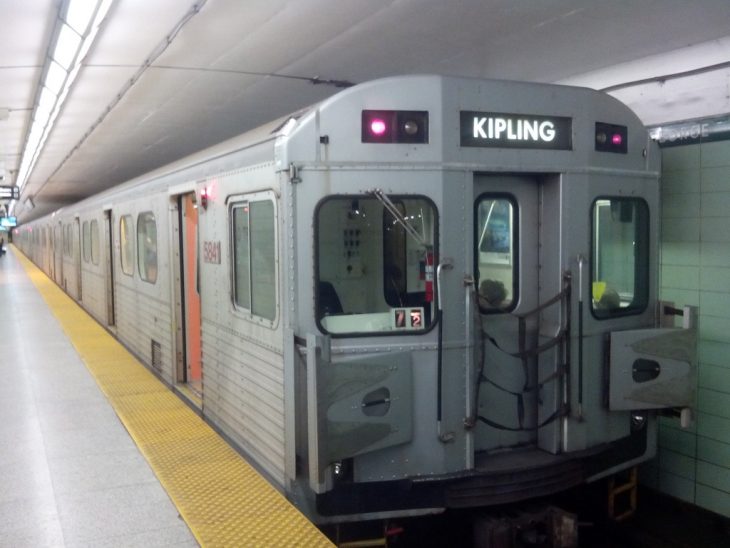
By Ahmad Hathout
TORONTO – Innovation Minister Francois-Philippe Champagne announced Monday that all carriers will need to provide service to their customers on Rogers’s wireless network in Toronto’s subway system by October 3.
All carriers will need to provide service within three weeks from Monday and will have to enter commercial agreements within the next 100 days – or December 20. Those stipulations, which will apply to Bell, Quebecor’s Freedom and Telus, are as of Monday conditions of those carriers owning spectrum, the technology powering wireless communications.
Government officials said on a technical briefing with media Monday that carriers will need to provide services by October 3 by any means, as they won’t need to enter commercial agreements by that date. The officials added that any rates negotiated by December 20 or post-arbitration — in the event they cannot hash out a deal — will apply retroactively to October 3.
The department also said after commercial agreements are in place, service must be provided at all current subway stations within six months, to cover 80 and 100 per cent of existing tunnels in two years and three years, respectively, and carriers must commit to providing service in new stations and tunnels.
That means voice, text and data services are expected at 100 per cent of stations by June 2024 and all tunnels by December 2026.
“The conditions will lead to more reliable access, reduction in dropped phone calls, and increased network speeds,” the government said in a presentation slide.
Government officials said they are confident that the Rogers’s network will be able to handle talk, text and some data from the influx of new carriers, despite protestations from the network owner.
Failure to comply will mean either administrative monetary penalties or a suspension or revocation of licences.
Carriers who fail to gain access to the network and provide services through no fault of their own will not be penalized by the department, officials said. If Rogers is found to prevent that access, it would be the one to shoulder the violation, they added.
“This approach reflects what we’ve been proposing all along – to bring 5G services to all riders as quickly as possible,” Rogers said in a statement. “Bell and Telus have been dragging their heels and the federal government is now forcing them to work with us in earnest to make connectivity possible for all riders. This is good news for Toronto transit riders. While we’ve been busy building, they’ve been busy whining. We’ll continue to work around the clock to upgrade and expand the network so all riders can connect anywhere on the subway.”
Rogers said it had previously asked the other carriers to come to the table and negotiate access, but were rebuffed. Bell and Telus have previously said the network should be owned jointly between the large providers.
Rogers agreed in April to acquire BAI Communications, which owned the exclusive contract to provide wireless services for the underground subway system. BAI came to an agreement with the TTC in 2012 to build a wireless network, but it didn’t progress as expected and only Freedom, then owned by Shaw, was using the service.
Rogers said the legacy BAI network couldn’t support more carriers. Rogers announced in August that it launched 5G services in tunnels and stations in the core parts of Toronto and upgraded the existing cell network to accommodate the other carriers. It promised to beef up the network and provide 5G capability to the entire network within two years.
All that’s left, it said, is for the other carriers to install their equipment, which it said could take around three weeks.
“TELUS is pleased by today’s decision to compel Rogers to provide access to all carriers on the TTC,” said Telus spokesperson Richard Gilhooley. “Minister Champagne’s order will significantly improve public safety and fair competition. It is regrettable that it took his action to force Rogers to do what they had promised to do months ago. The TELUS team stands ready to light up access as soon as possible, to the benefit of all TTC riders.
Bell added the following statement: “This is a good day for Toronto as all TTC riders should have high-quality cell phone service on the subway, regardless of carrier, for greater connectivity, convenience and safety. With the federal government now forcing Rogers to finally work with other carriers, we look forward to providing our customers with underground wireless coverage in the coming weeks.”
Quebecor said, “Until recently, Freedom had been the sole telecom provider in the TTC since 2015. We assure the residents of Toronto that we will maintain our wireless services in the city’s subway system. Minister Champagne’s demands are in line with our objective to offer extended coverage and the best available technology to our customers.”
The announcement follows a consultation the department launched in July, which requested public comment on the speed of deployment for and third-party access to the wireless network for the Toronto Transit Commission’s subway system.
The department initially proposed that 100 per cent of Toronto Transit Commission (TTC) stations be covered within 180 days after the 100-day period of negotiations or arbitration; 80 per cent of tunnels in the system (so there’s coverage between stations) be covered within two years and all of them by three years after the 100-day negotiation or arbitration; and 100 per cent of new stations and 100 per cent of new tunnels be covered within one year of the date those stations and tunnels become operation in the future.
It is also asked whether it should mandate commercial negotiations be completed within 30 calendar days after a decision on the consultation is made.



